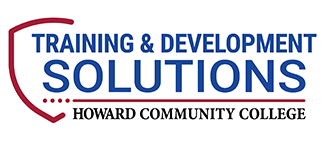
Training and Business Development Solutions
News Headlines
- Increases efficiency and productivity. A common outcome of training is the identification of “what’s in the realm of the possible.” And, positive changes typically follow.
- Welcomes new approaches to problem solving. Training forces people to take a step back and examine challenges and possible solutions in a new light.
- Creates alignment between goals and operations. Training can guide your team on who needs to be doing what — when and how — to take your business from where you are today to where you want to be in the future.
- Dedicates time for goal setting and planning. When teams feel like they can’t get their head above the water in the midst of their day-to-day work, little to no time is available to think about the big picture and long-term. Training can change that.
- Supports crisis avoidance. Do you have a problem that needs to be resolved now, before something major and detrimental happens? Training can engage your team in a discussion focused on the identification of solutions, to prevent a crisis from occurring.
- Promotes teambuilding. People connect in new and interesting ways when they are given an opportunity to spend time together outside of their normal work space. These connections, formed during training, can lead to a happier work environment for all.
- Enhances culture building. Training opens a door to build, change, or reinforce positive culture within the workplace. How do you maintain or change your workplace vibe? Chances are, the answer will emerge during your team’s training session.
- Identifies best practices. The floor can be open during training sessions for every person on the team to share what works best, or ideas for new approaches to try.
- Shares different perspectives. When you bring people together for training who don’t typically work side-by-side in the workplace, they can gain perspectives and insights that may help them do their jobs better or more efficiently.
- Supports the transition to management. When a stellar employee makes the transition to a leadership position, training can equip them with new tools to manage projects, people, conflicts, and opportunities, the right way and with confidence.
- Clarifies strengths. You can come away from your training program with a solid understanding of what your team is doing well and how you can capitalize in these areas.
- Generates an understanding of weaknesses. You can also come away from your training program with a solid understanding on areas where your team needs to improve, and what processes need to be formed or adjusted.
- Acknowledges opportunity. What could you be doing, that you are not already doing, that will produce a positive return for your business? Training helps identify your business’ potential.
- Forges new connections between leadership and staff. Some of the most successful training sessions take place when leaders and staff sit around one table or come together in one room, to work together as one cohesive and collaboration team. This helps forge meaningful connections at all levels within organizations.
- Builds and boosts morale. When you offer training and professional development opportunities for your team, the message is clear: we care about you and are willing to invest in you. It makes people feel good. Then they do a better job.
- Ensures every person has a voice. While participating in training programs, your staff should know they are in a safe place where their opinions will be valued and their voices will be heard. When leaders convey that “no idea is a bad idea” and “all perspectives are welcome,” the outcomes can be amazing.
- Positions the importance of continuing education. Everyone wants to stay up-to-date with the latest and greatest trends and approaches, relative to their work. Education allows your team to achieve that and increases their knowledge base in valuable ways.
- Grows people through skill building. Some training programs are designed to teach teams new skills that they can bring back into the workplace, to do their jobs better or differently.
- Builds confidence. Equipping people with the right knowledge and skills do their jobs now and in the future instills confidence, which leads to higher levels of productivity.
- Gives people a reason to join you. These days, job seekers want to see that training, education, and professional development opportunities are included in their benefits packages. When you offer these opportunities, people have an additional reason to work for you.
- Gives people a reason to stay with you. People want to be in a place where they can continue to grow, personally and professionally. They are often motivated to stay when being part of your team affords them that opportunity.
- Shows appreciation. Most people view training as an important benefit, but also understand that not every company is willing to make these types of investments. By doing so, you are showing your team that you appreciate them, in a special way.
- Supports leadership or business owner growth. You can learn a lot, as the business owner and manager, by taking part in the training sessions you are investing in for your team — whether you are an active participant or an observer and notetaker.
Wondering how you, your business, and your team could benefit from training opportunities? Look no further. In celebration of the start of 2023, we are giving you 23 reasons to layer professional development into your annual plan, and to earmark it as a top organizational priority.
Our list could go on even further. These are the reasons so many clients turn to Training & Development Solutions for support in building customized professional development and learning programs. What will your reason be?
Release date: Thursday, January 5, 2023
